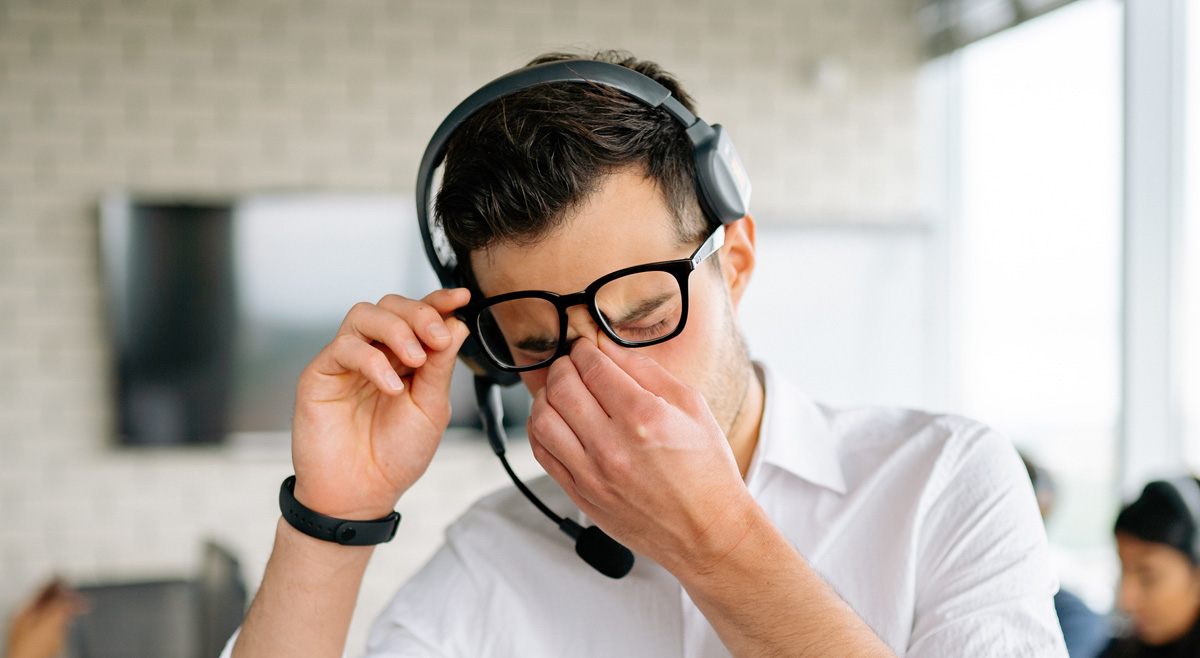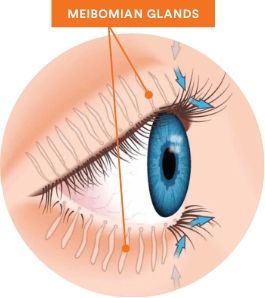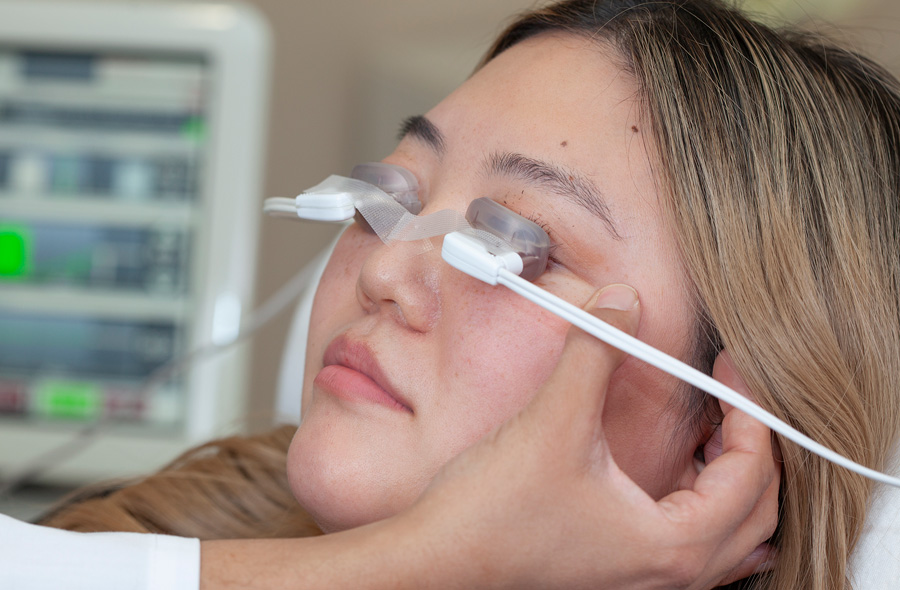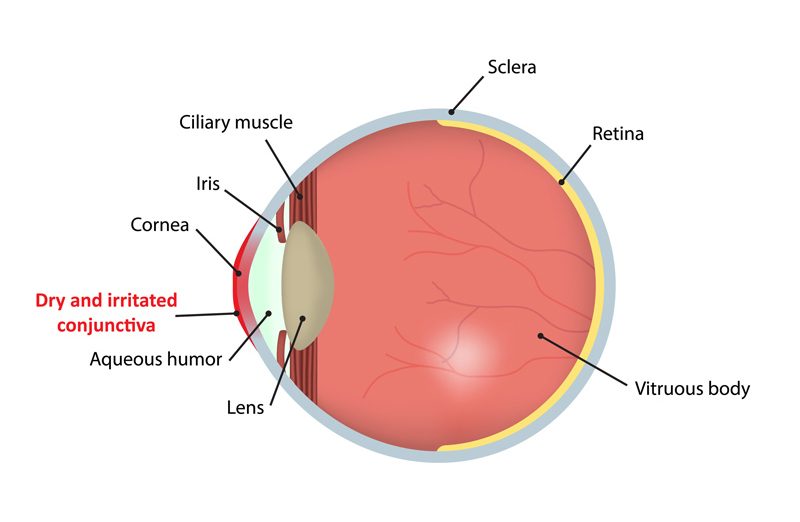Liberal,KS
Dry Eye Treatment

Liberal, KS
Dry Eye
Diagnosis and Treatment for Dry Eye, Liberal, KS
If you feel a stinging or burning sensation in your eyes, you could be suffering from dry eye. Identifying the root cause of your dry eye is crucial to getting the right dry eye treatment in Liberal. At Prairie Vista Eye & Optical, our skilled optometrists have the expertise and technology to properly diagnose and treat dry eye.
What is dry eye?
Dry eye is a common condition that occurs when the eyes do not produce enough tears, or the tears that are produced are of poor quality. Tears are essential for maintaining eye health and for clear vision. They lubricate the eyes, protect against infection, and provide important nutrients to the cornea.
What causes dry eye?
There are many factors that can contribute to dry eye, including age, hormonal changes, certain medications, and environmental factors such as dry air or wind. Other conditions, such as blepharitis or autoimmune disorders, can also lead to dry eye.
The most common reason people develop dry eye is meibomian gland dysfunction (MGD). MGD is an inflammatory disorder of the meibomian glands in your eyelids, which produce lipids that coat your tears to prevent them from evaporating too quickly. When these glands become blocked or clogged with oil, it causes dry eye syndrome.

What are the symptoms of dry eye?
When the eyes do not produce enough tears or the tears evaporate too quickly, it can lead to dry, itchy, and irritated eyes. Some other common symptoms of dry eye include:
- A scratchy or sandy feeling in your eyes
- Increased sensitivity to light
- Eye pain or redness
- Stringy mucus or discharge from your eyes
- Fluctuating vision
- Paradoxically, watery eyes may occur because the eyes are producing insufficient tears to keep them lubricated
- Blurry vision
- Eye fatigue and discomfort after long periods of visual activity, such as computer use or reading
If you experience any of these symptoms, it’s important to make an appointment with your optometrist to diagnose the cause of your case of dry eye and to get relief.
How is dry eye diagnosed?
Dry eye is typically diagnosed during a comprehensive eye exam performed by an eye care professional. Tests may include evaluating your tear quality, volume, evaporation rate, and chemical composition.
LipiView® interferometer for dry eye diagnosis
At Prairie Vista Eye & Optical in Liberal, we use a LipiView® interferometer to diagnose dry eye syndrome caused by meibomian gland dysfunction. LipiView® is an innovative digital imaging diagnostic tool used to assess the health of the meibomian glands in the lower eyelids.
During the LipiView® test, the patient sits in front of a special imaging device that captures high-resolution images of the meibomian glands. The device uses interferometry to measure the thickness and quality of the oil layer on the surface of the tears, which can help determine if the meibomian glands are functioning properly.
The test is non-invasive and painless, taking only a few minutes to complete. The results of the test can help our eye doctor determine the best course of treatment for the patient’s dry eye, such as prescribing eye drops, oral supplements, or other therapies to improve the function of the meibomian glands.
How do you treat dry eye syndrome?
Treatment for dry eye depends on the severity of the condition and the underlying cause(s). Common treatments for dry eye include:
- Prescription eye drops to reduce inflammation
- Treating oil glands
- Blinking exercises or proper eyelid hygiene
If an infection is causing your dry eye symptoms, your eye doctor may also prescribe low-dose antibiotics. In more serious cases where other treatments are ineffective, surgery or therapy may be recommended.
LipiFlow® treatment
Our team at Prairie Vista Eye & Optical offers LipiFlow® as a treatment option for patients with dry eye syndrome due to meibomian gland dysfunction.
LipiFlow® is a medical device that uses thermal pulsation technology to treat MGD by applying gentle heat and pressure to the meibomian glands.
The treatment is non-invasive and typically takes about 12 minutes to complete. It has been shown to be effective in improving the function of the meibomian glands and relieving symptoms of dry eye syndrome.
Our eye care professionals evaluate each patient’s specific needs and symptoms to determine if LipiFlow® is the best treatment option. The treatment is performed in our office in Liberal, and patients can typically return to their normal activities immediately following the procedure.

Looking for dry eye treatment in Liberal?
With proper care from an experienced professional, dry eye syndrome can be managed effectively so that you can enjoy comfortable vision. If you suffer from dry eye, our experts are here to help you determine the underlying cause and find lasting relief. Schedule an appointment at our office today.
Can dry eye cause blurry vision?
Yes. Without a consistent healthy tear film across the cornea, vision becomes intermittently blurred.
Can dry eye cause headaches?
Perhaps indirectly as a person tries to force their vision to be clearer.
Can dry eye cause blindness?
Severe, chronic dry eye can cause a significant reduction in vision.
Can dry eye cause floaters?
Floaters are usually an internal eye problem. However, as the tear film evaporates, you might see a subtle line moving across your vision, especially if viewing a bright, uniform background.
What does dry eye look like?
A dry eye may look red or irritated, with a glossy or watery appearance. You might also notice the eyelids being slightly swollen or the eyes appearing tired.
Can dry eye cause eye pain?
Yes. Patients often report irritation, dryness, or a sandy or gravel-like feeling.
Can dry eye cause double vision?
While dry eye doesn’t cause a doubling of images, it will smear the image and create a ghosting phenomenon.
Can dry eye cause eye twitching?
Subtle eyelid twitching is often associated with stress, lack of sleep, and caffeine use—all of which can exacerbate dryness.
Can dry eye be cured?
Treatment of dry eye requires constant maintenance to keep the eyes moist and healthy.
Can dry eye affect your vision?
Yes! When your eyes don’t have enough moisture or the right quality of tears, it can lead to blurry vision, eye fatigue, and difficulty seeing clearly. In some cases, severe dry eye can cause fluctuating vision that may worsen as the day goes on.
Can dry eye cause dizziness?
Some people may report dizziness, but we don’t find that to be a frequent occurrence.
Can dry eye cause light sensitivity?
Yes! As the corneal cells dry and die, they scatter light and cause glare and reduced vision.
Can dry eye cause redness?
Yes. Dryness leads to redness. If you’re using a drop to “get the red out,” you’re likely treating a symptom of dry eye, not the cause.
Can dry eye cause styes?
We might think of it in reverse. Styes can cause damage to the oil-producing tear glands in the eyelids. Often, a stye can cause gland damage, which leads to less oil production and therefore a dryer eye.
Can dry eye affect only one eye?
Yes, but dry eye usually affects both eyes, even if it is worse in one eye. Driving with your window down can dry the left eye more than the right.
Are dry eyes itchy?
Perhaps, but it is usually allergies that cause itching. However, dry eye and eye allergies can occur simultaneously.
Why dry eye after LASIK?
LASIK can initially damage the corneal nerves that send pain and dry eye sensation information to the brain. The brain then signals the tear glands to produce more tears. When the damaged corneal nerves don’t feel the dryness, the brain doesn’t know to signal more tear production.


